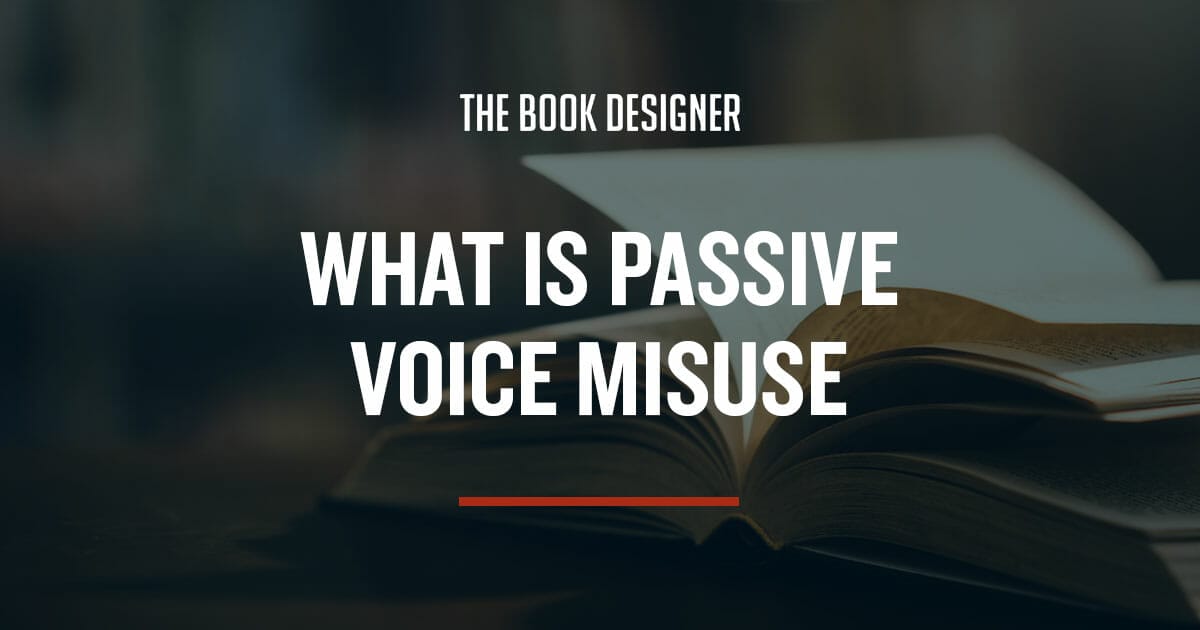The classics we grew up studying in school, though revered, might not fare well in today’s literary market. Part of that can be attributed to what we would now consider passive voice misuse. Similarly, the books topping bestseller charts now would likely have been overlooked a century ago.
The nature of writing is ever-evolving, constantly adapting to the changing tastes and preferences of readers. What resonated with audiences a hundred or more years ago often fails to strike the same chord with contemporary readers, especially in a world where fast-paced television shows and engaging Hollywood movies set a high bar.
Yet, there’s still a niche for those who relish a more leisurely-paced narrative. However, on a broader scale, it’s crucial for writers to captivate their audience from the outset. Engaging writing that encourages readers to eagerly turn each page is key to retaining their interest.
One effective method to achieve this is by understanding what passive voice is, identifying it, and actively avoiding it in your writing. Embracing an active writing style is essential to keep your readers engaged from the first word to the last.
Developing a strong understanding of passive voice and its misuse sharpens your writing skills. Recognizing and rectifying passive voice leads to more dynamic and compelling storytelling, revolutionizing the way you write.
Here’s what you need to know about passive voice misuse and how to avoid it:
What Is Passive Voice?
You know passive voice dominates your writing when the subjects of your sentences are acted on by the verbs.
For example: The coffee spill was cleaned by the barista.
It’s crucial, especially when writing fiction, that the subject does the action. Reading a novel about a protagonist responding to events (reactionary protagonist) is much more boring than reading about a protagonist making a choice and acting on it (proactive protagonist).
Let’s say the barista is your protagonist. To put your protagonist back in the spotlight, you could simply rearrange a few words.
Corrected: The barista cleaned the coffee spill.
Notice we cut a few words out of the original: The coffee spill was cleaned by the barista.
Then, we simply started the sentence from the last phrase and worked backward: The barista cleaned the coffee spill.
Tip: When looking for passive voice, look for state-of-being verbs.
What is Passive Voice Misuse?
One of the biggest reasons, if not the most important reason, we work to cut passive voice from writing is because it makes our writing weak.
For instance, writing in passive voice:
- Makes your protagonist seem passive
- Makes your protagonist seem reactive rather than proactive
- Makes the story boring
- Makes the story weaker overall
That said, there is a time and a place for it. Let’s look at some examples.
Original: “Peter was going to the store. The afternoon sun was so hot it made him sweat. His mother had told him to buy eggs because his teacher had told him to bring cookies to class.”
In this example, Peter seems reactive. His mother tells him to go to the store. His teacher tells him to make cookies for class. The sun is so hot he is sweating.
Let’s rearrange some words, cut some state-of-being verbs, and see what happens.
Better: “Peter wiped the sweat from his brow as he walked to the store under the hot sun. He needed to buy eggs to make cookies for class. His teacher had asked him to bring cookies, and mother said they were out of eggs.”
Peter now seems proactive as he heads to the store for eggs in response to 1) following through on his teacher’s request and 2) his mother saying he needs to buy eggs. Also, notice the second example follows the show-don’t-tell rule much better than the first.
Now, you may have spotted a state-of-being verb and passive voice remaining in this example.
See it?
“His teacher had asked.”
Sometimes there is a time and place for passive voice. Especially when a character receives instruction before the scene you are writing, it’s acceptable to write passively.
Think of Frodo in The Lord of the Rings. Gandalf tasks Frodo with taking the ring away from the Shire, but Frodo is known as a proactive, brave character who goes against all odds to accomplish this task, and takes it even further, all the way to Mordor.
In fact, Gandalf tasking Frodo with the quest reveals Frodo’s character: He is proactive, respects authority, and will do anything to help his friend and save the Shire.
Passive voice misuse occurs when a writer simply tells a story, as in the example we just used:
- Peter was going to the store
- The afternoon sun was hot
- His mother had told him to buy eggs
- His teacher had told him to bring cookies to class
Active voice allows you to show these facts and create a more heroic character.
- Peter wiped the sweat from his brow
- He walked to the store under the hot sun
- He needed to buy eggs to make cookies for class
- His teacher had asked him to bring cookies
- And mother said they were out of eggs
We see Peter in a much different light in this example. Peter proactively walks through the heat to accomplish a task. He’s going above and beyond what is expected (bring cookies) by going to the store to buy eggs so he can make cookies and bring them to class.
This is just one example with low stakes, but put your story’s plot points into these bullet points instead. You’ll see how active writing changes the angle of your story and, therefore, strengthens your protagonist.
Passive Voice Misuse Examples
Now that you are aware of what passive voice is and what passive voice misuse is, let’s look at further examples so you have a firm grasp of the concept.
Passive: The ball was thrown by the girl.
Active: The girl threw the ball.
Passive: The car was driven by the teenager.
Active: The teenager drove the car.
Passive: The flowers were wilted by the sun.
Active: The sun wilted the flowers.
Passive: The water was heated by the sun.
Active: The sun heated the water.
Passive: The cat was scared by the dog.
Active: The dog scared the cat.
Passive: The candle was blown out by Shelby.
Active: Shelby blew out the candle.
How to Fix Passive Voice Misuse
To fix passive voice, ensure that the subject is doing the action, and cut state-of-being verbs as you see them.
Again, some uses of passive voice are acceptable.
For instance, let’s say you have a strong, proactive protagonist and a very reactive villain.
You may want to cut active voice in the following example. For clarity, we will simply name the villain “Villain” and the protagonist “Protagonist.”
Example 1: Villain runs away from Protagonist as Protagonist chases after him.
To further illustrate the character of your villain, you could instead do this.
Example 2: Villain was running away when Protagonist spotted him and took off in pursuit.
This example communicates more of the villains’ character (running away) as well as the protagonist’s character (spotting villain, running in pursuit).
Use passive voice with caution, and if you do decide to use it, do so with purpose.
We learn the rules so we know how to use them and when to break them, after all.
Point-of-View
While many of the classics use omniscient POV (where a narrator knows all and tells it as a story), writers today often use limited POV and often first-person POV.
This is one more reason why it is important to write actively.
When writing in omniscient POV, a narrator can tell what is happening and what is being done. Telling is key for omniscient POV because it is, by definition, being told.
However, in limited POV, the POV character only knows what he or she experiences. An active protagonist needs active writing to reveal their strength.
For instance, take this example:
Omniscient POV: “Her name is called and she feels sweat run down her back as she approaches the stage. The man at the microphone smiles, knowing how hard she worked for this moment.”
In this example, we are told what happens to the protagonist (her name is called), what she feels, as well as what the man at the mic knows.
Instead, let’s switch to first-person, present tense POV: “The man at the microphone calls my name and smiles, as if he knows I worked hard for this moment. Sweat runs down my back as I approach the stage.”
Maintaining one POV, writing actively, and showing what happens rather than telling via a narrator allows the reader to feel immersed in the moment. Of course, you could do the same in limited third-person POV as well:
“The man at the microphone calls her name and smiles, as if he knows she worked hard for this moment. Sweat runs down her back as she approaches the stage.”
Passive Voice Misuse Versus Active Voice Use
As you begin writing actively, passive voice may still creep in. Notice when you begin a sentence with the subject followed by a state-of-being verb. Then cut the state-of-being verb for an issue fix:
Passive: She was going to the store.
Active: She went to the store.
The more active and proactive your writing is, the stronger it will be. The stronger your writing is, the stronger your protagonists will come across to your readers.
The same goes for nonfiction, autobiography/memoir writing, and article writing:
Passive: I was going to the store one day when my dad…
Active: On my way to the story one day, my dad…
Or for article writing:
Passive: The research we have done in resent weeks reveals that…
Active: Our last four weeks of research reveals that…
Recap
Passive voice is writing in such a way that the subjects of your sentences are acted on by the verbs.
In today’s fast-paced world, just as viewers are hooked by a proactive main character going after what they want, completing the quest, or proactively responding to danger, readers are gripped by the same type of character.
A strong, active voice will take your writing from good to great.
Great writing, strong characters, and an active voice will heighten your chances not just of selling your book, but of keeping those readers turning pages until the very end.
Learning to spot the difference between the misuse of passive voice and the appropriate use of active voice, as well as knowing the occasional time passive voice is helpful, takes time to learn. But mastering this concept will be worth it in the long run.
Keep at it, refer to the above examples when you need to, and remember that writing is a process. Few, if any, start out as great writers. But those who stick with it reap the rewards of seeing their writing go from good to great.
You can do this.
Now, get back to that writing and make it shine!
Need Writing Help?
At The Book Designer, we recommend two different grammar tools to help you with your writing: Grammarly and ProWritingAid.




